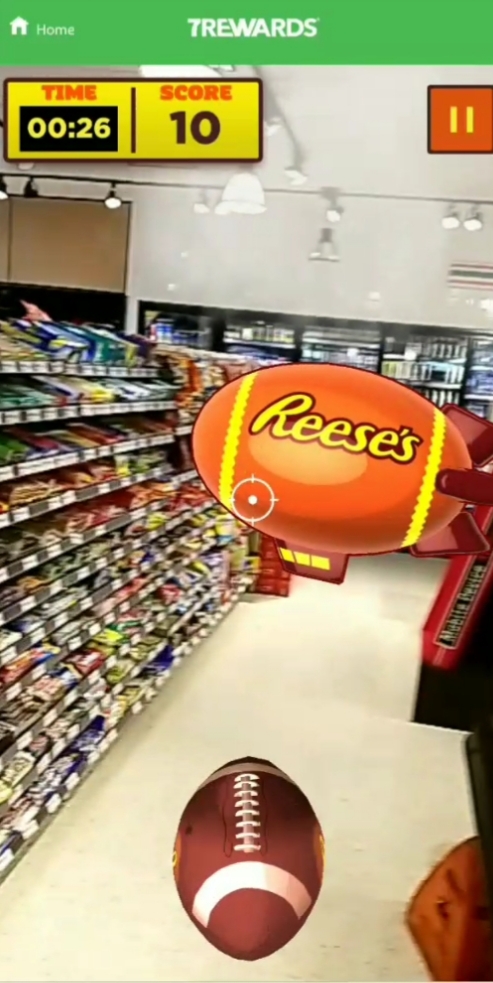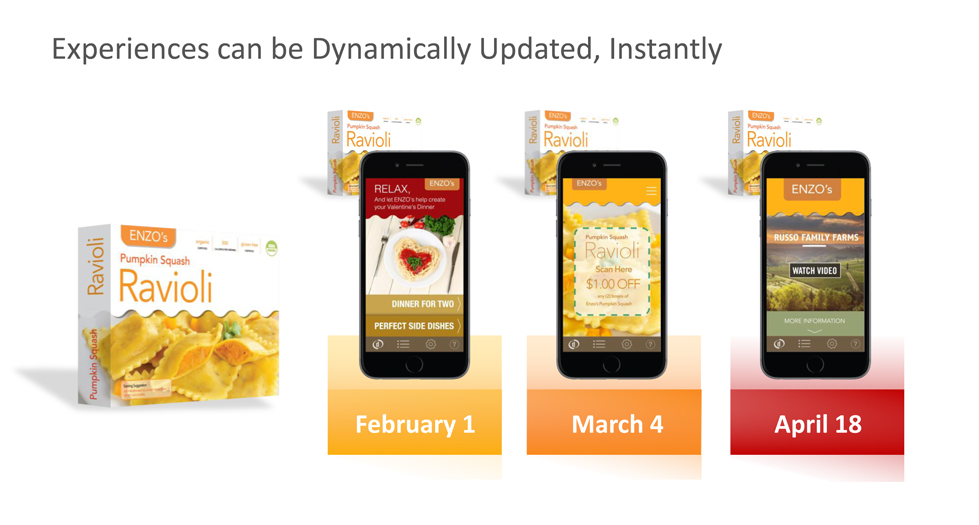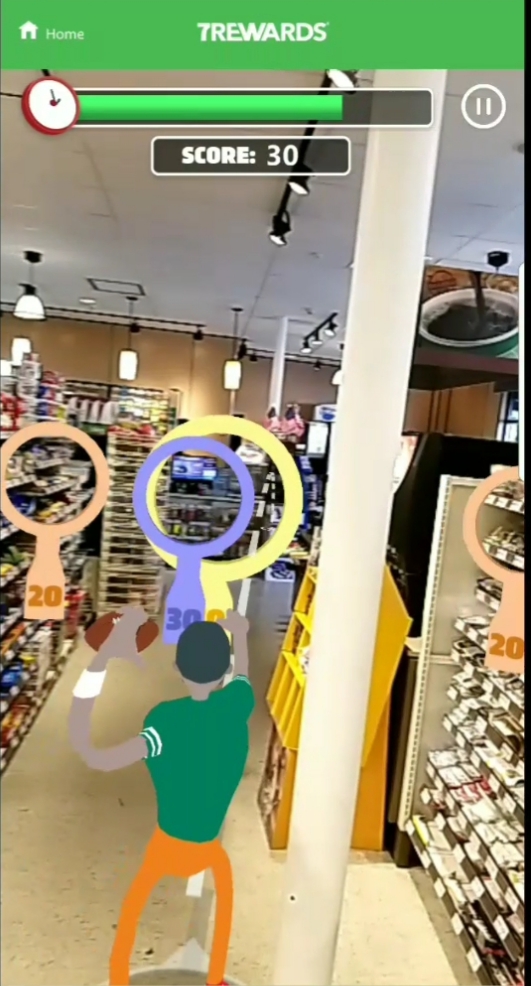Innovation
Scan, Engage, Buy
Published
6 years agoon
By
BXP Staff
The in-store shopping experience is undergoing a dramatic transformation, driven primarily by technology. Consumers are relying on their smartphones and other portable digital devices to make their purchasing decisions, even as they browse the aisles of brick-and-mortar retailers.
This trend poses an opportunity and challenge for marketers, designers and brand managers: how to use digitally enhanced experiences to elevate physical interactions with shoppers and brand fans, including virtual reality, augmented reality, intelligent  packaging and omnichannel connections.
packaging and omnichannel connections.
Brands in almost all niches are using these apps and platforms to acquire, retain and engage with customers like never before. For example: A mobile app with an augmented reality capability from Home Depot lets customers use their phone to “see” what a virtual item would look like in the physical world and get a better idea of how it would look in their home.
At a store opening in Texas, Ikea had customers play games, check out the store’s furniture offerings and even learn about sustainability all through a virtual reality experience. According to one report, almost 300 people engaged in the immersive activity, which lasted from three to five minutes.
REI gives in-store customers an omnichannel shopping experience with an app where they can scan a product’s barcode on their smartphone and get up-to-date information about the item, customer reviews and more.
These new types of shoppers are everywhere. According to the Pew Research Center, 77% of Americans own a smartphone. Brands that hope to do well in this shifting landscape are finding ways to leverage digital experiences to drive physical interactions.
AdvertisementInteractivity can take place at almost any stage of the shopping transaction. For many brands, it starts with intelligent packaging. Some experts say that the definition of intelligent package is still evolving, but other things are clear.
“On intelligent packaging, packaging acts as a data carrier,” says Prateek Lal, managing director at Adept Packaging. “As our world becomes more digitized, the value that packaging can deliver can be greatly increased by driving the physical world’s interconnectivity with the digital world. This is what packaging does.”
Lal says that marketers should first ask themselves what type of problem they want to solve and then find the technology that will best solve it, rather than rush to embrace technology and then search for a problem to solve. They should also look at intelligent packaging as something that creates genuine value.
Case in point: a new service that Amazon introduced called Transparency. Smart packages carry a unique alphanumeric code provided by the manufacturer. Consumers can verify the product’s authenticity by using a mobile app to scan the code. “This is a real concrete value that you can offer,” Lal says.
Once brand managers settle on a goal, they need to decide on the type of content that will give the most value to the consumer.
“With certain products, it might be more extensive how-tos, which would ensure that the consumer had a better experience with that product. From a marketing side, you’re more comfortable and confident that their experience is going to be the optimum,” says Larry Logan, chief evangelist at Digimarc. “With some products, they need more instructions and more detail and perhaps a visual with a video that’s beyond what a package could carry.”8
AdvertisementLogan refers to this strategy as “edutainment,” combining education and entertainment as part of the consumer’s interactive experience. It could be a game triggered by CPG packaging that keeps the consumer engaged and having fun. Brands could also cross-sell or cross-promote products by using content that educates consumers about products that align with their current purchase or gives an introductory offer for a new product.
Digimarc’s Dynamic Upgrading platform lets brands change the content on an item without having to change the packaging. A code is embedded in the package that can be easily pulled up and inserted with new information for ongoing engagement as circumstances change.
“A consumer scanning the same code with their smartphone will get a different brand experience,” Logan says, “what we often refer to as brand romance. It might be how-to, provenance on the company, smart label content or product transparency. A store associate with their device can scan the code and might be getting more product detail that would inform them how to better sell to consumers or it might tap into the retailer’s inventory system to see that that store doesn’t have it, but another store does.”
 Intelligent packaging can provide brand managers with valuable data on the backend, too. “It can show them where people are engaging with their products, what time of day, how much time they’re spending—a lot of intelligent data that we can extract from these physical products to help us serve these brand customers and retail customers in a better way,” says Keith Curtin, vice president of business development at Zappar.
Intelligent packaging can provide brand managers with valuable data on the backend, too. “It can show them where people are engaging with their products, what time of day, how much time they’re spending—a lot of intelligent data that we can extract from these physical products to help us serve these brand customers and retail customers in a better way,” says Keith Curtin, vice president of business development at Zappar.
For brands that want to create effective in-store digital experiences with augmented reality, Curtin recommends a three-part strategy.
First, create a compelling call to action to inform the consumer that there is valuable content to unlock behind a product, sign or code. Curtin says that brands like 7-Eleven and Pepsi have generated high engagement rates with augmented reality with a “pretty simple and straightforward call to action: Download, scan, play. Download, scan, win. Download, scan, save.”
AdvertisementSecond, deliver content that is relevant to the target audience. For example, a food product could come with a recipe that consumers can activate with their digital device, instead of indiscriminate content that they can find elsewhere, such as a video on YouTube.
Third, be aware of context in planning an augmented reality (AR) strategy and add engagement that is important to the consumer. Curtin says that a beverage company discovered that consumers responded to the social media and sweepstakes part of one campaign, but showed little interest in the mobile gaming component.
Zappar teamed up with 7-Eleven and Fox to build an AR campaign around Deadpool 2, where in-store customers scanned a code to unlock games and earn points.
“Once you scanned your mobile app at the register at point-of-purchase, any points that you scored in those games transferred over into actual reward points that you could redeem for prizes and products in stores,” Curtin says.
The interaction of physical and digital experiences can yield previously unavailable data, allowing brand managers and marketers to fine-tune their engagement with consumers.
“We’ve partnered with Thin Film Electronics to integrate OpenSense NFC tags into folding cartons,” says James Lee, director, innovation solutions group at Jones Packaging. “These folding cartons can interact with an NFC enabled smartphone to provide more information to the consumer.”
The NFC tag uses an integrated sensor to identify whether the package is open or still factory sealed, as well as providing other content. With this data, marketers can come up with an interactive experience as well as pre-sale or post-sale messaging, depending on the context.
“Consumers are often shopping with their phones while they’re in the retail environment. They are more accustomed to scanning things, more accustomed to things like contact-less payment,” Lee says. “Let’s take advantage of that to the point where we can sway them or get them to use their smartphone to interact with the package and start offering them things.”
SPONSORED VIDEO
Branding with Ferocity – Thinking Like an Indie Brand
Get a better understanding on how to leverage new technologies to engage and delight shoppers, sustainability’s role in product and package design – being sustainable and premium are not mutually exclusive, plus best practices and tips for collaboration and how to launch new products and refresh existing product line-ups and brands.
You may like
Advertisement
Subscribe

BULLETINS
Get the most important news and business
ideas from BXP Magazine's news bulletin.
Advertisement







